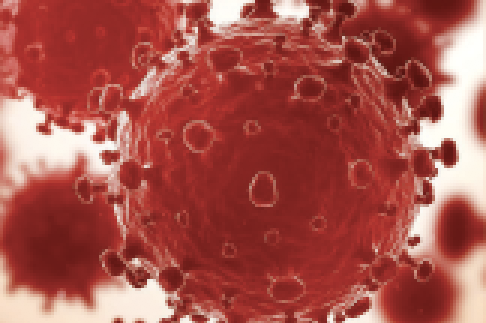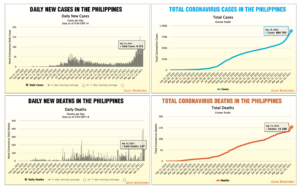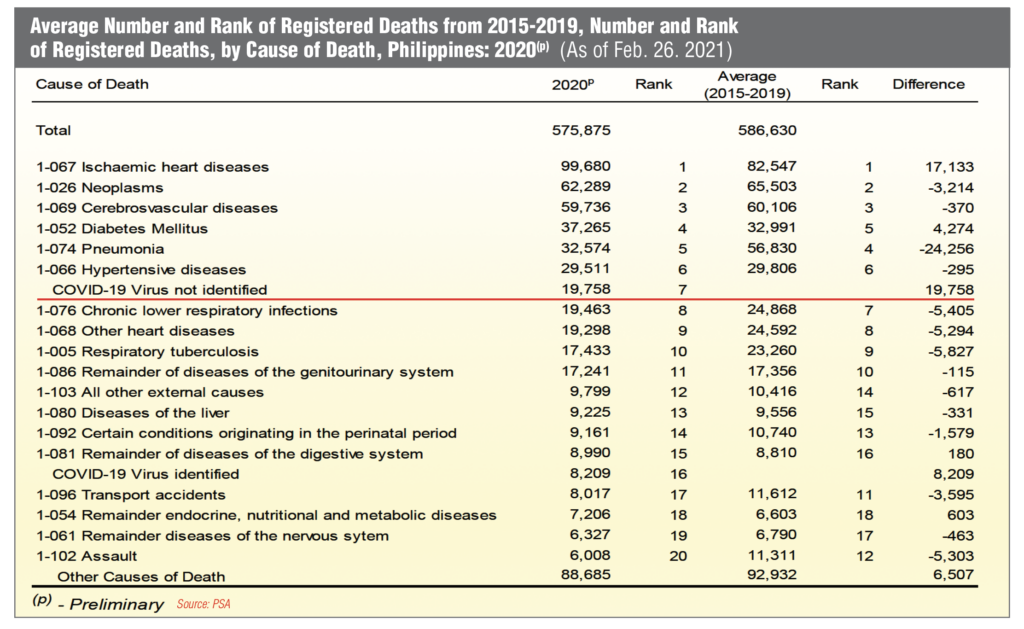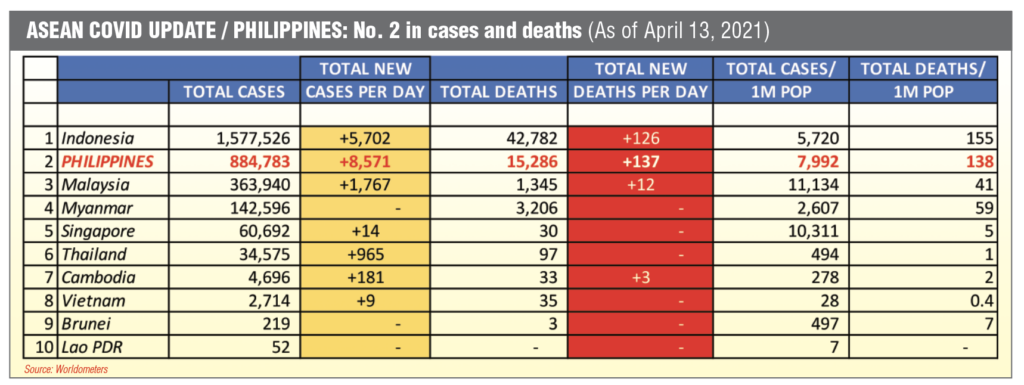
By the end of this year, more than 150,000 Filipinos would have died from COVID-19.
They come from two generations of great Filipinos–those born from 1930 to 1960 and those born from 1961 to 1990.
In the past seven days, April 6 to April 12, a total of 1,714 died from COVID. That’s an average of 245 fatalities per day.

245 have died daily from COVID
Multiply 245 by the remaining number of days from this writing to end-2021—245×263 — and you get 64,435 deaths. Add the 64,435 to total deaths as of April 13, 2021, 15,149 or (64,435+15,149) and you have a death toll of 79,584.
Please note that the Department of Health reports only half of actual deaths from COVID. In 2020, DoH reported total deaths of just 9,244.
The Philippine Statistics Authority (PSA) reported 2020 total COVID deaths of close to 20,000 (19,758) — or 2.13 to 2.16 times the DoH figure.

Actual COVID deaths are twice DoH data
So the total expected deaths from April 13, 2021 to Dec. 31, 2021 of 64,435 should be multiplied by 2.16 to get a more realistic death tally of 139,179. Add the deaths from Jan.1, 2021 to April 12, 2021 of 5,903 multiplied by 2.16, you get 12,750. Add 12,750 and 139,179 and the sum is a staggering 151,929 Filipinos possibly dying by end of this year from COVID.
The 151,929 deaths are more than the number – 100,000—who died in 52 years of the communist insurgency and in 49 years of the Muslim insurgency. In half a century, only an average of 2,000 died per year from the world’s two longest running insurgency wars. The 150,000 is almost three times the 57,000 number of Filipino-American soldiers who died in World War II.
The deadliest presidency
Even if only half of the projected 151,000 deaths materialize, 75,500 deaths will still make Duterte’s the deadliest presidency in the history of this country since 1898, 123 years ago when Emilio Aguinaldo proclaimed Asia’s first Republic.
Note that I am talking only of deaths from the pandemic. The toll does not include deaths from Duterte’s drug war, estimated at between 7,000 (official figures) and 27,000 (human rights groups’ figures).
The two generations of Filipinos born from 1930 to 1990 are the greatest of our race.
Those are two generations of the best and brightest among us, war heroes, great entrepreneurs, the best our professional and managerial class, the builders of our nation before Duterte came to power.

A dead virus with no brains
We are allowing one dead virus, with no brains, just a speck of protein—plus one man who is a considerably flawed character—to destroy the best of the Filipino race.
These people are your grandparents, parents, our brothers and our sisters, our children. They leave behind a record of service to country and people, a legacy unmatched by any other generation of Filipinos, in just flicker of a moment, often without the decency of last rites, wake and burial with fond and tearful farewell.
In the past two weeks, every other day, I buried online, a relative, a classmate, a friend, a colleague, a contemporary. Though scores of miles away, such burial can be draining to the body and the spirit. It leaves you with an inner outrage how come these things happen in the 21st century when man had conquered everything but himself.

Two deaths that changed history
In 1896, the execution of one man, Rizal, who was trying to escape from a smoldering situation, triggered Asia’s best revolution and the birth of Asia’s first republic.
In 1983, the assassination of one man, Ninoy Aquino, who was absent from our midst for seven years and seven months, triggered a peaceful revolution that became a template for 36 other nations to gain their freedom and their democracy.
Today here we are facing the mass murder of 150,000 of the best of us and we cower in studied silence and in calibrated courage.
What are we, Filipinos, doing in the face of such massive extinction?
— Tony Lopez
READ FULL ARTICLE HERE:

